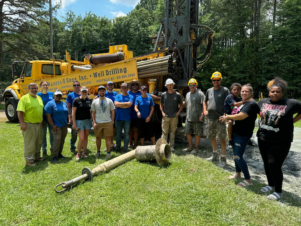There’s no denying that worker safety is a top priority for many companies. All trade professionals need to ensure safe job sites, whether working on home improvement projects or other contractor positions.
Safety needs to be paramount — no company wants to see a maintenance employee get severely injured or face any life-threatening situations.
Thankfully, technology can be leveraged to enhance safety measures on any job site. New technologies for safety are emerging, and no matter the job performed, workers should consider implementing tech to achieve high safety standards.
1. Virtual Reality (VR)
Generally speaking, VR is becoming a widely used technology across various industries, from consumer electronics to health care. VR is used in many sectors, especially for training purposes — construction, plumbing and HVACR work is no exception.
For example, the Air Force has recently adopted VR systems to train workers responsible for aircraft. In addition to training in a controlled environment, which is safer than working on the actual plane, processes were made easier. The technology helps employees achieve a sense of realism when performing tasks, and they can better understand all the variants of the systems that keep planes running at a high level.
2. Wearables for Fall Detection
Many trades require people to work on elevated surfaces. Performing maintenance on equipment in higher locations can increase the risk of a worker experiencing a fall, leading to severe injury or even death.
There are new wearables on the market, such as safety vests or hard harts, with built-in sensors, GPS and real-time locating. Some vests even come with an air bag that will deploy if it senses someone is falling. Consider using these new types of wearables to ensure worker safety.
3. Exoskeletons
There are two different types of wearable exoskeletons that can be used on the job. Passive and active versions have various purposes but can be leveraged to ensure employee safety.
Exoskeletons work in tandem with the user. For example, passive exoskeletons prevent stress injuries and help hold essential tools or equipment used for maintenance. Active exoskeletons can help lift heavy objects, something many trade professionals need to accomplish daily. Together, the two types of technology play a key role in keeping workers from overexertion and related dangers like exhaustion, allowing for a healthier and more productive work experience.
4. Inspection Software
Software is being leveraged by every business across sectors, whether it’s to improve operational efficiency or keep track of employee productivity. Inspection plays a significant role in keeping equipment working properly.
Using inspection software to perform routine maintenance is becoming more widespread across the trade industries. Inspection software helps guide human workers while on the job, ensuring their safety and detecting equipment failure that could lead to injury. Automation will likely transform every industry and make daily tasks more efficient.
5. Security Cameras
When nightfall comes and a job site is left unattended, expensive equipment must be kept safe from theft. Aside from maintenance, construction workers have often turned to security cameras for ample job site surveillance to prevent instances of theft or damage, leading to lengthier projects and extra costs.
Using high-end security cameras acts as a deterrent to would-be criminals and can capture anyone who tries to trespass on a job site and cause damage or steal tools. Consider placing cameras in vulnerable areas to improve overall security measures. There are plenty on the market to choose from.
Ensure Workers Safety on Job Sites
Consider these technologies to improve workers’ safety as 2022 approaches. Whether it’s an electrician working on a telephone pole or someone on the roof of a residential building, these jobs require comprehensive safety measures to protect employees.
 April Miller is a managing editor at ReHack.com who specializes in engineering and construction technology. You can find her work published on sites like Open Data Science and The Society of Women Engineers.
April Miller is a managing editor at ReHack.com who specializes in engineering and construction technology. You can find her work published on sites like Open Data Science and The Society of Women Engineers.



Join the conversation: